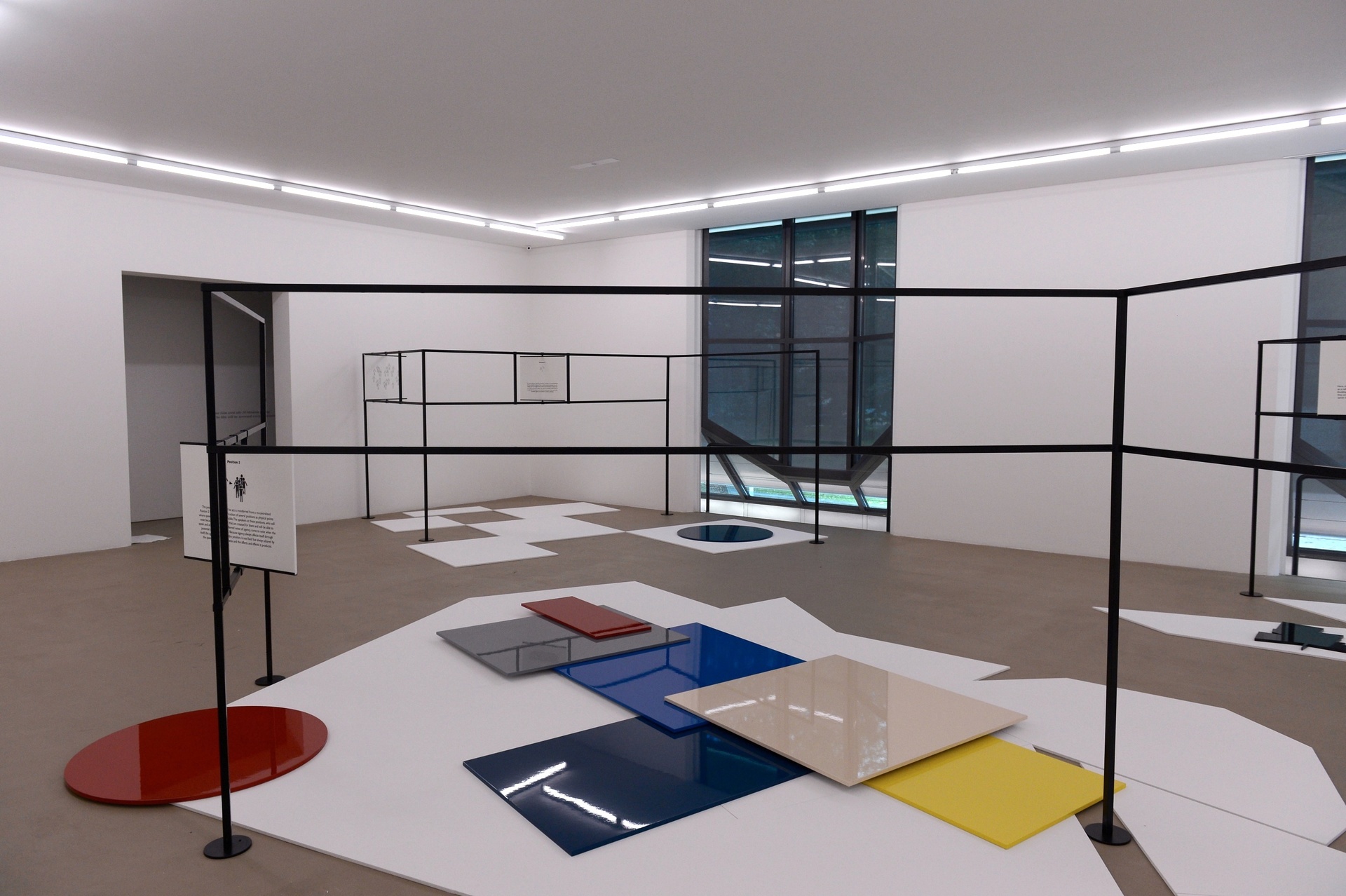One Million Years – System und Symptom
Modern life takes place in systems—in social systems, economic systems, value systems, communication systems, judicial systems, systems of thought, health systems, training systems, transport systems, scientific systems, systems of living, educational systems, production systems, and many more.
Systems are, on the one hand, invisible; on the other, they are ubiquitous. Systems order things and regulate everyday life. They define processes and relations. Complexity is organized into functional structures in systems. Systems are patterns. Only through continual repetition are their principles recognizable. Otherwise the pattern disintegrates. A system that disintegrates is lost. Consequently, systems are geared to resolving contradictions. They check the compatibility of parts and pattern. They follow their own logic, which is the only way that they can sustain themselves. And whatever follows their logic fits in with them, whether it be the standardized shelves of a globally distributed furniture system, a date in a calendar system, the speech modules of a service hotline’s telephone script, or people’s willingness to be part of the labor market.
Only what fits in has a place in the system. Hence, as the sociologist Niklas Luhmann has noted, the relation of the system to its surroundings is selective and, at the same time, normative. What is not compatible with the norm of the system becomes a symptomatic problem. Symptoms arise where systems reduce complexity. Whatever is suppressed in the system returns as a symptom. Nothing is in and for itself symptomatic. What is referred to as abnormal in one system may be judged normal in another system—what is considered counterproductive here may be viewed as productive there. It is only the self-preservatory logic of each particular system that determines what is one or zero.
When a particular action comes up against the limits of a system the logic of that system becomes apparent, and often only then. Because in themselves the limits of systems and the norms that they establish are invisible. In the symptomatic limit case of an exception or infringement, however, they lift their veil. But is it automatically a disadvantage when human action conflicts with the logic of systems and becomes symptomatic? The philosopher Slavoj Žižek believes that one should love one’s symptom as one loves oneself. Because a symptom “contains a kernel of pleasure,” one last area within one’s own existence that resists “every interpretation.”
The exhibition One Million Years—System und Symptom addresses the aesthetic, cultural, and political implications of systems logic from the point of view of contemporary art. It brings together art projects that tackle systems and systematics in a wide variety of ways.
The exhibition presents, on the one hand, artists whose work pursues the construction of precise systems that are committed to their own aesthetic logics, as for example Josef Albers, Hanne Darboven, On Kawara, Sol LeWitt, Jan Schoonhoven, and Simon Starling. These artists explore the principle of systematics coolly, playfully, yet often so extremely that they systematically undermine every regular kind of systems thinking. On the other hand, the exhibition presents works that make social systems, norms, and mechanisms of exclusion that are otherwise invisible visible, as in the case of Henrik Olesen, Martha Rosler, Octavian Trauttmansdorff, Andreas Slominski, or Heimo Zobernig. These works reveal situations where the logic of a system comes to light with surprising clarity. Hence, they raise questions as to how social identity and supposedly normal life are created by social systems in the home, at school, or in the judiciary, and where reprisals lie in wait. Thus, in the exhibition One Million Years—System und Symptom, the works of artists who appropriate systems in their own highly individual ways encounter works in which the systematic ordering of life is represented and subjected to critique.
The exhibition brings together works from the Kunstmuseum Basel collection, the Emanuel Hoffmann Foundation, the Hanne Darboven Stiftung Hamburg, and other loans from Amsterdam, Berlin, and Vienna. Some of the works on view have been newly produced or adapted. In the case of a few artists, the exhibition was the occasion for a thoroughgoing restoration and reconditioning of works and video material—an aspect of great significance in the work of the Kunstmuseum Basel, Museum für Gegenwartskunst.
With Vito Acconci, Josef Albers, Christian Boltanski, Hanne Darboven, Thomas Demand, Andrea Fraser, Katharina Fritsch, On Kawara, Sol LeWitt, Henrik Olesen, Falke Pisano, Martha Rosler, Jan J. Schoonhoven, Andreas Slominski, Simon Starling, Fiona Tan, Octavian Tratmansdorff und Heimo Zobernig.

